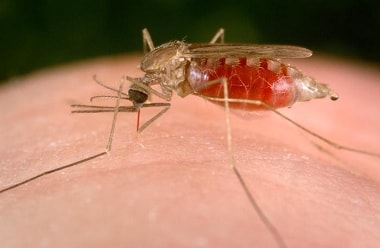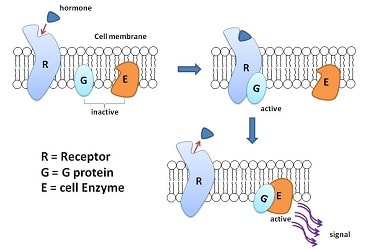▼ Artificial heart muscle to mend you after a heart attack now! [11-30-17]
 Scientists have developed a fully functioning artificial human heart muscle large enough to patch over damage typically seen in patients, who have suffered a heart attack. The advance takes a major step toward the end goal of repairing dead heart muscle in human patients, researchers have said.
Right now, virtually all existing therapies are aimed at reducing the symptoms from the damage that has already been done to the heart, but no approaches have been able to replace the muscle that is lost, because once it is dead, it does not grow back on its own.
This is a way that we could replace lost muscle with tissue made outside the body.
Heart Patches: Know More Scientists have developed a fully functioning artificial human heart muscle large enough to patch over damage typically seen in patients, who have suffered a heart attack. The advance takes a major step toward the end goal of repairing dead heart muscle in human patients, researchers have said.
Right now, virtually all existing therapies are aimed at reducing the symptoms from the damage that has already been done to the heart, but no approaches have been able to replace the muscle that is lost, because once it is dead, it does not grow back on its own.
This is a way that we could replace lost muscle with tissue made outside the body.
Heart Patches: Know More
- Unlike some human organs, the heart cannot regenerate itself after a heart attack.
- The dead muscle is often replaced by scar tissue that can no longer transmit electrical signals or contract, both of which are necessary for smooth and forceful heartbeats.
- The end result is a disease commonly referred to as heart failure that affects over 12 million patients worldwide.
- Heart patches could be implanted over the dead muscle and remain active for a long time, providing more strength for contractions and a smooth path for the heart's electrical signals to travel through.
- These patches also secrete enzymes and growth factors that could help recovery of damaged tissue that has not yet died.
- However, a heart patch must be large enough to cover the affected tissue. It must also be as strong and electrically active as the native heart tissue, or else the discrepancy could cause deadly arrhythmias.
- This is the first human heart patch to meet both criteria.
|
▼ New malaria cases reduced by a third in India [11-30-17]
 India has reduced its new malaria cases by one third, and even crossed the malaria mortality targets of 2020, according Union Minister of Health and Family Welfare J. P. Nadda at a high-level round table on 'Accelerating the Elimination of Malaria in the Southeast Asia Region'.
Nearly three-fourth of the share of the regional burden, India's successes have significantly contributed to the reduction of the burden of malaria for the entire Southeast Asia region.
The Union Minister noted that a majority of malaria cases in the country occur in its bordering districts, forests and tribal areas India has reduced its new malaria cases by one third, and even crossed the malaria mortality targets of 2020, according Union Minister of Health and Family Welfare J. P. Nadda at a high-level round table on 'Accelerating the Elimination of Malaria in the Southeast Asia Region'.
Nearly three-fourth of the share of the regional burden, India's successes have significantly contributed to the reduction of the burden of malaria for the entire Southeast Asia region.
The Union Minister noted that a majority of malaria cases in the country occur in its bordering districts, forests and tribal areas
|
▼ Xiaomi dethrones Samsung in Indian urban market [11-28-17]
 Chinese mobile handset major Xiaomi has replaced Samsung at the top position in the country's urban market.
The Beijing-headquartered company, which entered India three years ago, has managed to garner a higher market share in the top 50 cities during the September quarter.
Samsung, which had been dominating the space for over four years, lost out to Xiaomi as it held 24.1 per cent of the urban market, compared with Xiaomi's 26.5 per cent, IDC indicated.
As per a report by International Data Corporation (IDC), Xiaomi held the maximum market share in the top 50 Indian cities in the Q3 2017 period, followed by Samsung, Lenovo (including Moto), Oppo, and Vivo.
The top 50 Indian cities have accounted for 50 percent of overall smartphone sales in the country in the third quarter this year.
IDC in its India Monthly City-Level Smartphone Tracker claims that in the top 50 cities, Xiaomi ousted Samsung to take 26.5 percent of the market.
It is said to have registered 120 percent growth in the period, while the Redmi Note 4 contributed to 40 percent of its volumes - becoming the highest selling smartphones across the cities.
Samsung, which moved to the second slot with 24.1 percent market share, saw 15 percent quarterly growth. IDC says the brand continues to dominate in several cities thanks to its "deep penetration and reach."
The Samsung Galaxy J2, Galaxy J7 Max, and Galaxy J7 Nxt made up 50 percent of volumes of the South Korean manufacture.
Lenovo (including the Moto brand) had the third spot with a 10.3 percent share, and grew 8 percent from the previous quarter.
Oppo moved up to the fourth position with a 5.2 percent share, with the Oppo F3, F3 Plus, and A71 smartphones major contributors to the growth the company enjoyed.
Finally, Vivo slipped to the fifth spot at 5.1 percent, and is said to have seen a marginal decline in sales from the last quarter. Chinese mobile handset major Xiaomi has replaced Samsung at the top position in the country's urban market.
The Beijing-headquartered company, which entered India three years ago, has managed to garner a higher market share in the top 50 cities during the September quarter.
Samsung, which had been dominating the space for over four years, lost out to Xiaomi as it held 24.1 per cent of the urban market, compared with Xiaomi's 26.5 per cent, IDC indicated.
As per a report by International Data Corporation (IDC), Xiaomi held the maximum market share in the top 50 Indian cities in the Q3 2017 period, followed by Samsung, Lenovo (including Moto), Oppo, and Vivo.
The top 50 Indian cities have accounted for 50 percent of overall smartphone sales in the country in the third quarter this year.
IDC in its India Monthly City-Level Smartphone Tracker claims that in the top 50 cities, Xiaomi ousted Samsung to take 26.5 percent of the market.
It is said to have registered 120 percent growth in the period, while the Redmi Note 4 contributed to 40 percent of its volumes - becoming the highest selling smartphones across the cities.
Samsung, which moved to the second slot with 24.1 percent market share, saw 15 percent quarterly growth. IDC says the brand continues to dominate in several cities thanks to its "deep penetration and reach."
The Samsung Galaxy J2, Galaxy J7 Max, and Galaxy J7 Nxt made up 50 percent of volumes of the South Korean manufacture.
Lenovo (including the Moto brand) had the third spot with a 10.3 percent share, and grew 8 percent from the previous quarter.
Oppo moved up to the fourth position with a 5.2 percent share, with the Oppo F3, F3 Plus, and A71 smartphones major contributors to the growth the company enjoyed.
Finally, Vivo slipped to the fifth spot at 5.1 percent, and is said to have seen a marginal decline in sales from the last quarter.
|
▼ Aditya-L1, India's first solar mission, to be launched in 2019. [11-27-17]
 The India Indian Space Research Organisation (ISRO) is set to launch first solar mission Aditya-L1 in 2019. It will be India's first dedicated scientific mission to study sun.
The mission aims to put 1,500-kg heavy class Aditya-L1 satellite into halo orbit around Lagrangian point L1, a point between Sun and Earth. This point is at a distance of about 1.5 million km from earth.
The project is approved and the satellite will be launched during 2019 - 2020 timeframe by PSLV-XL from Sriharikota.
Aditya-1 was meant to observe only the solar corona.
The outer layers of the Sun, extending to thousands of km above the disc (photosphere) is termed as the corona. It has a temperature of more than a million degree Kelvin which is much higher than the solar disc temperature of around 6000K.
How the corona gets heated to such high temperatures is still an unanswered question in solar physics.
Aditya-L1 with additional experiments can now provide observations of Sun's Photosphere (soft and hard X-ray), Chromosphere (UV) and corona (Visible and NIR).
In addition, particle payloads will study the particle flux emanating from the Sun and reaching the L1 orbit, and the magnetometer payload will measure the variation in magnetic field strength at the halo orbit around L1.
These payloads have to be placed outside the interference from the Earth's magnetic field and could not have been useful in the low earth orbit.
The main payload continues to be the coronagraph with improved capabilities. The main optics for this experiment remains the same.
Aditya-L1: Know More The India Indian Space Research Organisation (ISRO) is set to launch first solar mission Aditya-L1 in 2019. It will be India's first dedicated scientific mission to study sun.
The mission aims to put 1,500-kg heavy class Aditya-L1 satellite into halo orbit around Lagrangian point L1, a point between Sun and Earth. This point is at a distance of about 1.5 million km from earth.
The project is approved and the satellite will be launched during 2019 - 2020 timeframe by PSLV-XL from Sriharikota.
Aditya-1 was meant to observe only the solar corona.
The outer layers of the Sun, extending to thousands of km above the disc (photosphere) is termed as the corona. It has a temperature of more than a million degree Kelvin which is much higher than the solar disc temperature of around 6000K.
How the corona gets heated to such high temperatures is still an unanswered question in solar physics.
Aditya-L1 with additional experiments can now provide observations of Sun's Photosphere (soft and hard X-ray), Chromosphere (UV) and corona (Visible and NIR).
In addition, particle payloads will study the particle flux emanating from the Sun and reaching the L1 orbit, and the magnetometer payload will measure the variation in magnetic field strength at the halo orbit around L1.
These payloads have to be placed outside the interference from the Earth's magnetic field and could not have been useful in the low earth orbit.
The main payload continues to be the coronagraph with improved capabilities. The main optics for this experiment remains the same.
Aditya-L1: Know More
- The Aditya-1 mission was conceived as a 400kg class satellite carrying one payload, the Visible Emission Line Coronagraph (VELC) and was planned to launch in an 800 km low earth orbit.
- A Satellite placed in the halo orbit around the Lagrangian point 1 (L1) of the Sun-Earth system has the major advantage of continuously viewing the Sun without any occultation/ eclipses.
- Therefore, the Aditya-1 mission has now been revised to "Aditya-L1 mission" and will be inserted in a halo orbit around the L1, which is 1.5 million km from the Earth.
- The satellite carries additional six payloads with enhanced science scope and objectives.
|
▼ MPPA caps prices of 51 essential formulations [11-27-17]
 National drug pricing regulator NPPA on 25th Nov, 2017 said it has capped prices of 51 essential formulations, including those used for the treatment of cancer, pain, heart conditions and skin problems.
The prices have been slashed in the range of 6 to 53 per cent.
NPPA is an organization of the Government of India which was established, inter alia, to fix/ revise the prices of controlled bulk drugs and formulations and to enforce prices and availability of the medicines in the country, under the Drugs (Prices Control) Order, 1995.
The organization is also entrusted with the task of recovering amounts overcharged by manufacturers for the controlled drugs from the consumers.
It also monitors the prices of decontrolled drugs in order to keep them at reasonable levels. National drug pricing regulator NPPA on 25th Nov, 2017 said it has capped prices of 51 essential formulations, including those used for the treatment of cancer, pain, heart conditions and skin problems.
The prices have been slashed in the range of 6 to 53 per cent.
NPPA is an organization of the Government of India which was established, inter alia, to fix/ revise the prices of controlled bulk drugs and formulations and to enforce prices and availability of the medicines in the country, under the Drugs (Prices Control) Order, 1995.
The organization is also entrusted with the task of recovering amounts overcharged by manufacturers for the controlled drugs from the consumers.
It also monitors the prices of decontrolled drugs in order to keep them at reasonable levels.
|
▼ Natural bacterial immune system converts into world's smallest data recorder [11-27-17]
 Researchers from Columbia University Medical Centre (CUMC) in US have converted natural bacterial immune system into the world's smallest data recorder.
The researchers modified an ordinary laboratory strain of ubiquitous human gut microbe (bacteria) Escherichia coli (E Coli) which enabled it to record their interactions with environment and also time-stamp events.
Such bacteria, swallowed by a patient, might be able to record the changes they experience through the whole digestive tract, yielding an unprecedented view of previously inaccessible phenomena.
Other applications could include environmental sensing and basic studies in ecology and microbiology, where bacteria could monitor otherwise invisible changes without disrupting their surroundings.
CRISPR-Cas, an immune system is found in many species of bacteria.
CRISPR-Cas copies snippets of DNA from invading viruses so that subsequent generations of bacteria can repel these pathogens more effectively.
As a result, the CRISPR locus of the bacterial genome accumulates a chronological record of the bacterial viruses that it and its ancestors have survived.
When those same viruses try to infect again, the CRISPR-Cas system can recognise and eliminate them.
To build their microscopic recorder, the researchers modified a piece of DNA called a plasmid, giving it the ability to create more copies of itself in the bacterial cell in response to an external signal. Researchers from Columbia University Medical Centre (CUMC) in US have converted natural bacterial immune system into the world's smallest data recorder.
The researchers modified an ordinary laboratory strain of ubiquitous human gut microbe (bacteria) Escherichia coli (E Coli) which enabled it to record their interactions with environment and also time-stamp events.
Such bacteria, swallowed by a patient, might be able to record the changes they experience through the whole digestive tract, yielding an unprecedented view of previously inaccessible phenomena.
Other applications could include environmental sensing and basic studies in ecology and microbiology, where bacteria could monitor otherwise invisible changes without disrupting their surroundings.
CRISPR-Cas, an immune system is found in many species of bacteria.
CRISPR-Cas copies snippets of DNA from invading viruses so that subsequent generations of bacteria can repel these pathogens more effectively.
As a result, the CRISPR locus of the bacterial genome accumulates a chronological record of the bacterial viruses that it and its ancestors have survived.
When those same viruses try to infect again, the CRISPR-Cas system can recognise and eliminate them.
To build their microscopic recorder, the researchers modified a piece of DNA called a plasmid, giving it the ability to create more copies of itself in the bacterial cell in response to an external signal.
|
▼ BrahMos missile fired successfully [11-23-17]
 The world's fastest supersonic cruise missile BrahMos was successfully test fired from Indian Air Force's (IAF) Sukhoi-30MKI fighter jet for the first time.
The missile was gravity dropped from Su-30MKI from its fuselage and two-stage missile's engine fired up and was propelled towards the intended target in Bay of Bengal.
BrahMos Missile: Know More The world's fastest supersonic cruise missile BrahMos was successfully test fired from Indian Air Force's (IAF) Sukhoi-30MKI fighter jet for the first time.
The missile was gravity dropped from Su-30MKI from its fuselage and two-stage missile's engine fired up and was propelled towards the intended target in Bay of Bengal.
BrahMos Missile: Know More
- The 2.5-ton BrahMos-ALCM (air-launched cruise missile) "can also easily go over 400-km", like its 2.9-ton land and ship-launched variants already inducted into the armed forces.
- The BrahMos missile combined with the Sukhoi-30MKI fighter, which has a cruising range of 3,200-km or a combat radius of about 1,500-km without mid-air refuelling, constitutes a decidedly deadly weapons package.
- The conventional (non-nuclear) weapon, for instance, can target Chinese aircraft carriers and other warships, or block Pakistan's Gwadar port by sinking a few ships in the harbour for that matter.
- The world-class BrahMos is now capable of being launched from the land, sea and air, completing the tactical cruise missile triad for India.
- The missile's capability coupled with the Sukhoi-30Mki's superlative performance gives IAF a strategic reach and allows it to dominate the ocean and the battle-fields.
- It has already placed orders worth INR 6,516 crore for the BrahMos-ALCM, which takes the total orders for the missiles to INR 27,150 crore from the three Services till now.
- BrahMos committed to continue providing the world's fastest supersonic cruise missile to the Army, Navy and IAF.
|
▼ NASA tests supersonic landing parachute [11-22-17]
 The National Aeronautics and Space Administration (NASA) successfully tested supersonic landing parachute that will be deployed in its Mars rover mission set to launch in 2020.
The mission will rely on special parachute to slow spacecraft down as it enters Martian atmosphere at over 5.4 kilometres per second. It was first of several tests in support of NASA’s Mars 2020 mission. The National Aeronautics and Space Administration (NASA) successfully tested supersonic landing parachute that will be deployed in its Mars rover mission set to launch in 2020.
The mission will rely on special parachute to slow spacecraft down as it enters Martian atmosphere at over 5.4 kilometres per second. It was first of several tests in support of NASA’s Mars 2020 mission.
|
▼ Flowering plant named after Konyak Naga tribe [11-21-17]
 Scientists from Botanical Survey of India (BSI) have discovered a new species of parasitic flowering plant named Gleadovia konyakianorum. The species was named in honour of Konyak tribe of Nagas.
The plant was discovered in the semi-evergreen forest at an altitude of 1,500-1,600 metres during an exploration near Tobu town of Mon district in eastern Nagaland.
Parasitic plants are often referred to as curious plants, as they steal their nutritional needs from the host. Scientists from Botanical Survey of India (BSI) have discovered a new species of parasitic flowering plant named Gleadovia konyakianorum. The species was named in honour of Konyak tribe of Nagas.
The plant was discovered in the semi-evergreen forest at an altitude of 1,500-1,600 metres during an exploration near Tobu town of Mon district in eastern Nagaland.
Parasitic plants are often referred to as curious plants, as they steal their nutritional needs from the host.
|
▼ Revealed: How drought resistant plants survive without water? [11-20-17]
 Drought-resistant plants such as cacti and succulents, make use of an enhanced form of photosynthesis to minimise water loss.
The research, published in journal The Plant Cell, could be used to help produce new crops that can thrive in previously inhospitable, hot and dry regions across the world.
Photosynthesis involves taking carbon dioxide from the atmosphere to convert into sugars using sunlight.
Scientists at the University of Liverpool in the U.K. found that these drought-resistant plants, such as cacti, agaves and succulents, make use of an enhanced form of photosynthesis known as crassulacean acid metabolism (CAM).
Unlike other plants, CAM plants are able to take up CO2 during the cooler night, which reduces water loss, and store captured CO2 as malic acid inside the cell, allowing its use for photosynthesis without water loss during the next day.
CAM photosynthesis is regulated by the plant's internal circadian clock, which allows plants to differentiate and pre-empt day and night and adjust their metabolism accordingly.
Process of Drought-Resistant Plant Photosynthesis: Know More Drought-resistant plants such as cacti and succulents, make use of an enhanced form of photosynthesis to minimise water loss.
The research, published in journal The Plant Cell, could be used to help produce new crops that can thrive in previously inhospitable, hot and dry regions across the world.
Photosynthesis involves taking carbon dioxide from the atmosphere to convert into sugars using sunlight.
Scientists at the University of Liverpool in the U.K. found that these drought-resistant plants, such as cacti, agaves and succulents, make use of an enhanced form of photosynthesis known as crassulacean acid metabolism (CAM).
Unlike other plants, CAM plants are able to take up CO2 during the cooler night, which reduces water loss, and store captured CO2 as malic acid inside the cell, allowing its use for photosynthesis without water loss during the next day.
CAM photosynthesis is regulated by the plant's internal circadian clock, which allows plants to differentiate and pre-empt day and night and adjust their metabolism accordingly.
Process of Drought-Resistant Plant Photosynthesis: Know More
- However, relatively little is known about the exact molecular processes that underpin the optimal timing of CO2 being stored and released in this unique way.
- Researchers looked at an enzyme called PPCK that is involved in controlling the conversion of CO2 to its overnight stored form.
- They wanted to know if PPCK is a necessary component for engineering CAM photosynthesis and tested this by switching the PPCK gene off in the succulent CAM plant Kalanchoe fedtschenkoi.
- They found that, for CAM to work properly, the cells must switch on PPCK each night driven by internal circadian clock.
|
▼ China launches first electric cargo ship in world [11-17-17]
 China launched world's first fully electric cargo ship in Guangzhou, capital city of Guangdong province.
It is the first ship in the world to use lithium ion battery.
The ship will be mainly used to run in inland section of Pearl River for carrying coal for generation of electric power.
First Electric Cargo Ship: Know More China launched world's first fully electric cargo ship in Guangzhou, capital city of Guangdong province.
It is the first ship in the world to use lithium ion battery.
The ship will be mainly used to run in inland section of Pearl River for carrying coal for generation of electric power.
First Electric Cargo Ship: Know More
- The 70.5-metre-long ship, which weighs about 600 tonnes, was launched in Guangzhou in South China's Guangdong Province.
- The vessel, manufactured by the Guangzhou Shipyard International Company Ltd, is powered by a 26-tonne lithium battery. It can cruise at the top speed of 12.8 km per hour.
- As the ship do not use fossil fuels, it has zero emission, including carbon, sulphur and PM2.5 and it could be used as a passenger liner or a working ship, state-run Global Times reported.
- On its inaugural run, the vessel was loaded with thermal coal mainly for areas around the Pearl River in Guangdong Province.
|
▼ Swachh Bharat: Free Bio-toilets in all coaches by 2018 [11-17-17]
 The Union Ministry of Railways has advanced target for 100% completion of installing human waste discharge free Bio-toilets in coaches to December 2018.
Earlier, the target to install bio-toilets in all its coaches as part of the Swachh Bharat Mission was by September 2019.
Ministry of Railways The Union Ministry of Railways has advanced target for 100% completion of installing human waste discharge free Bio-toilets in coaches to December 2018.
Earlier, the target to install bio-toilets in all its coaches as part of the Swachh Bharat Mission was by September 2019.
Ministry of Railways
- The Ministry of Railways is a ministry in the Government of India, responsible for the country's rail transport.
- Website: indianrailways.gov.in
- Formed: 16 April 1853
- Jurisdiction: India
- Headquarters: Rail Bhavan, 1, Raisina Road, New Delhi
- Cabinet minister: Piyush Goyal
- Minister of state: Manoj Sinha, Rajen Gohain
|
▼ TATA Sky Beauty: 24 hour Interactive channel [11-17-17]
 Direct-to-home (DTH) service provider Tata Sky launched its latest interactive service Tata Sky Beauty, in partnership with FTheCouch (FTC) Beauty Studio, a Suniel Shetty venture.
The 24×7 beauty channel will carry content around hair styling, make-up, fashion, and skin-care featuring celebrity artists.
TATA Sky: Know More Direct-to-home (DTH) service provider Tata Sky launched its latest interactive service Tata Sky Beauty, in partnership with FTheCouch (FTC) Beauty Studio, a Suniel Shetty venture.
The 24×7 beauty channel will carry content around hair styling, make-up, fashion, and skin-care featuring celebrity artists.
TATA Sky: Know More
- Tata Sky is a direct broadcast satellite television provider in India, using MPEG-4 digital compression technology, transmitting using INSAT-4A and GSAT-10 satellite.
- CEO: Harit Nagpal (Aug 2010-)
- Headquarters: Worli, Mumbai
- Founded: 10 August 2006
- Number of employees: 100,000 (Approximately)
- Parent organization: Tata Sons
|
▼ Artificial protein blocks cancer and birth defects [11-16-17]
 A team of researchers has come up with an artificial protein that may block malignant properties of cancer cells as well as correct certain birth defects.
The findings may lead to identifying new molecular targets suitable for therapeutic intervention.
Cells in the human body need to communicate with each other to function properly. This is accomplished by a molecular mechanism called signal transduction and its dysregulation leads to human disease.
A group of molecules called G proteins act as a signalling mechanism that enables cells to change their behaviour when they are activated by surface receptors.
According to the researchers, the G proteins can be activated via alternative mechanisms independent of surface receptors that also impact normal cell behaviour and pathogenesis.
Scientists have engineered an artificial protein that when expressed in cells can specifically blunt receptor-independent G protein activation and subsequent changes in cell behaviour.
They have implemented this to block malignant properties of cancer cells and to correct birth defects associated with the aberrant dysregulation of cellular communication.
The clinical implications for this discovery are indirect - since the engineered protein cannot be delivered to patients - it does represent a significant advance in the identification of a new class of molecular targets in cancer or neonatal malformations. A team of researchers has come up with an artificial protein that may block malignant properties of cancer cells as well as correct certain birth defects.
The findings may lead to identifying new molecular targets suitable for therapeutic intervention.
Cells in the human body need to communicate with each other to function properly. This is accomplished by a molecular mechanism called signal transduction and its dysregulation leads to human disease.
A group of molecules called G proteins act as a signalling mechanism that enables cells to change their behaviour when they are activated by surface receptors.
According to the researchers, the G proteins can be activated via alternative mechanisms independent of surface receptors that also impact normal cell behaviour and pathogenesis.
Scientists have engineered an artificial protein that when expressed in cells can specifically blunt receptor-independent G protein activation and subsequent changes in cell behaviour.
They have implemented this to block malignant properties of cancer cells and to correct birth defects associated with the aberrant dysregulation of cellular communication.
The clinical implications for this discovery are indirect - since the engineered protein cannot be delivered to patients - it does represent a significant advance in the identification of a new class of molecular targets in cancer or neonatal malformations.
|
▼ Now, a pill that can be digitally tracked after consumption! [11-15-17]
 The Food and Drug Administration has approved the first drug in the United States with a digital ingestion tracking system, in an unprecedented move to ensure that patients with mental illness take the medicine prescribed for them.
The drug Abilify MyCite, developed by Otsuka Pharmaceutical Co. Ltd, was first approved by the FDA in 2002 to treat schizophrenia.
The ingestible sensor, made by Proteus Digital health, was approved for marketing in 2012.
The digitally enhanced medication works by sending a message from the pill's sensor to a wearable patch.
Being able to track ingestion of medications prescribed for illness may be useful for some patients.
Abilify MyCite's labelling asserts the ability of the product to improve patient compliance with their treatment regimen has not been shown.
Abilify MyCite should not be used to track drug ingestion in 'real-time' or during an emergency because detection may be delayed or may not occur.
In a portion of the statement to address privacy concerns, the FDA said the wearable patch that comes with the medication "transmits the information to a mobile application so that patients can track the ingestion of the medication on their smart phone.
Patients can also permit their caregivers and physician to access the information through a web-based portal.
Proteus Ingestible sensor "activates when it reaches stomach fluids and communicates with the patch."
The product is designed for the treatment of schizophrenia, acute treatment of manic and mixed episodes associated with a bipolar disorder and for use as an add-on treatment for depression in adults. The Food and Drug Administration has approved the first drug in the United States with a digital ingestion tracking system, in an unprecedented move to ensure that patients with mental illness take the medicine prescribed for them.
The drug Abilify MyCite, developed by Otsuka Pharmaceutical Co. Ltd, was first approved by the FDA in 2002 to treat schizophrenia.
The ingestible sensor, made by Proteus Digital health, was approved for marketing in 2012.
The digitally enhanced medication works by sending a message from the pill's sensor to a wearable patch.
Being able to track ingestion of medications prescribed for illness may be useful for some patients.
Abilify MyCite's labelling asserts the ability of the product to improve patient compliance with their treatment regimen has not been shown.
Abilify MyCite should not be used to track drug ingestion in 'real-time' or during an emergency because detection may be delayed or may not occur.
In a portion of the statement to address privacy concerns, the FDA said the wearable patch that comes with the medication "transmits the information to a mobile application so that patients can track the ingestion of the medication on their smart phone.
Patients can also permit their caregivers and physician to access the information through a web-based portal.
Proteus Ingestible sensor "activates when it reaches stomach fluids and communicates with the patch."
The product is designed for the treatment of schizophrenia, acute treatment of manic and mixed episodes associated with a bipolar disorder and for use as an add-on treatment for depression in adults.
|
▼ Northeast gets India's first Air Dispensary! [11-14-17]
 Northeast is all set to get India's first-ever "Air Dispensary" based in a helicopter and the Union Ministry of Development of Northeast (DONER) has already contributed INR 25 crore as part of the initial funding for this initiative.
DoNER Ministry had been exploring the idea of introducing a helicopter based Dispensary/OPD service in such far flung and remote areas, where no doctor or medical facility was available and the patient, in need, also did not have any access to any medical care.
The proposal put forward by the Ministry of DoNER, he said, has been accepted and is in the final stages of process in the Union Ministry of Civil Aviation.
The Union Ministry of Northeast/DoNER, Dr Jitendra Singh said, is keenly pursuing the proposal so that by the beginning of 2018, this could be the Union Government's gift to the people of Northeast.
Dr Jitendra Singh disclosed that even today, nearly 1/3rd of India's population did not have access to proper hospital bed care, as a result of which, poor patients living in remote areas remained deprived of crucial medical care.
The experiment being introduced in the Northeast, at the behest of the Ministry of Northeast/DoNER, can also be emulated in other hill states having difficult topography like Jammu & Kashmir and Himachal Pradesh, he added.
Air Dispensary in North East Northeast is all set to get India's first-ever "Air Dispensary" based in a helicopter and the Union Ministry of Development of Northeast (DONER) has already contributed INR 25 crore as part of the initial funding for this initiative.
DoNER Ministry had been exploring the idea of introducing a helicopter based Dispensary/OPD service in such far flung and remote areas, where no doctor or medical facility was available and the patient, in need, also did not have any access to any medical care.
The proposal put forward by the Ministry of DoNER, he said, has been accepted and is in the final stages of process in the Union Ministry of Civil Aviation.
The Union Ministry of Northeast/DoNER, Dr Jitendra Singh said, is keenly pursuing the proposal so that by the beginning of 2018, this could be the Union Government's gift to the people of Northeast.
Dr Jitendra Singh disclosed that even today, nearly 1/3rd of India's population did not have access to proper hospital bed care, as a result of which, poor patients living in remote areas remained deprived of crucial medical care.
The experiment being introduced in the Northeast, at the behest of the Ministry of Northeast/DoNER, can also be emulated in other hill states having difficult topography like Jammu & Kashmir and Himachal Pradesh, he added.
Air Dispensary in North East
- As per the envisaged plan, to begin with, helicopter will be based at two locations, namely Imphal in Manipur and Meghalaya in Shillong.
- Both of these cities have premier postgraduate medical institutes from where specialist doctors, along with the necessary equipment and paramedical staff, would be able to move into the helicopter and hold a dispensary/OPD in different locations across the eight States of North Eastern Region.
- On its way back, he said, the same helicopter can also transport a sick patient, requiring admission, to a city hospital.
- Giving an account of other new helicopter service plans for Northeast, three twin-engine helicopters are planned to be placed for initial operation on six routes in the region around Imphal, Guwahati and Dibrugarh.
|
▼ Meet Tyrannomyrmex alii - The new ant species of Western Ghats [11-9-17]
 Researchers have discovered a new species of ant in the Western Ghats, recognised as one of the world's 'hottest hotspots' of biological diversity.
The new species was found in the Periyar Tiger Reserve. The research, published in the latest issue of peer-reviewed journal Zootaxa.
Belonging to Tyrannomyrmex, a rare tropical genus of ants, the species was discovered by the team from the Vallakadavu range during an expedition a year ago.
Paying tribute to their mentor and eminent myrmecologist Musthak Ali, who is regarded as the country's 'ant man', the authors of the study have named the new species Tyrannomyrmex alii (or T. alii).
Tyrannomyrmex is a rare myrmicine (subfamily of ants) ant genus that is distributed in the Indomalayan bio-region that extends from southern India and Sri Lanka to southeast Asia.
The particular genus had been erected in 2003 with the discovery of the species, Tyrannomyrmex rex Fernández, in Pasoh Forest Reserve, Malaysia. Later, two more species that were under the same genus had been discovered; Tyrannomyrmex dux (or T. dux) from the Ponmudi hills in 2007 and T. legatus from the Sinharaja Forest Reserve in Sri Lanka in 2013.
T. alli has thus become the four species of the rare genus and the second one from India. Notably, both of the Tyrannomyrmex species that have been described from the country are known from the Western Ghats range in Kerala.
Tyrannomyrmex alii: Know More Researchers have discovered a new species of ant in the Western Ghats, recognised as one of the world's 'hottest hotspots' of biological diversity.
The new species was found in the Periyar Tiger Reserve. The research, published in the latest issue of peer-reviewed journal Zootaxa.
Belonging to Tyrannomyrmex, a rare tropical genus of ants, the species was discovered by the team from the Vallakadavu range during an expedition a year ago.
Paying tribute to their mentor and eminent myrmecologist Musthak Ali, who is regarded as the country's 'ant man', the authors of the study have named the new species Tyrannomyrmex alii (or T. alii).
Tyrannomyrmex is a rare myrmicine (subfamily of ants) ant genus that is distributed in the Indomalayan bio-region that extends from southern India and Sri Lanka to southeast Asia.
The particular genus had been erected in 2003 with the discovery of the species, Tyrannomyrmex rex Fernández, in Pasoh Forest Reserve, Malaysia. Later, two more species that were under the same genus had been discovered; Tyrannomyrmex dux (or T. dux) from the Ponmudi hills in 2007 and T. legatus from the Sinharaja Forest Reserve in Sri Lanka in 2013.
T. alli has thus become the four species of the rare genus and the second one from India. Notably, both of the Tyrannomyrmex species that have been described from the country are known from the Western Ghats range in Kerala.
Tyrannomyrmex alii: Know More
- The new species can be distinguished from the other species of the same genus through its morphological characteristics.
- While it differed from T. dux by the petiolar shape, it became dissimilar to T. legatus and T. rex by surface sculpture and pilosity.
- There are detailed morphological descriptions of the gyne and the worker castes, images from scanning electron microscopy, a key to all four known species of Tyrannomyrmex, and a note on the ecology of this rare genus.
|
▼ 7 items including Banaganapalle mangoes of AP given GI status [11-9-17]
 The famous Banaganapalle mangoes of Andhra Pradesh and Tulaipanji rice of West Bengal are among the seven commodities that have been granted Geographical Indication (GI) this fiscal year by the Indian patent office.
A GI is primarily an agricultural, natural or a manufactured product (handicrafts and industrial goods) originating from a definite geographical territory.
Typically, such a name conveys an assurance of quality and distinctiveness, which is essentially attributable to the place of its origin.
Darjeeling tea, Tirupati laddu, Kangra paintings, Nagpur orange and Kashmir pashmina are among the registered GIs in India.
The other five products which have received the GI tag this year include Pochampally Ikat of Telangana; Gobindobhog rice of West Bengal; Durgi stone carvings and Etikoppaka toys of Andhra Pradesh; and Chakshesang shawl of Nagaland, according to the Indian patent office website.
In 2016-17, as many as 33 items got GI registration.
Experts said that this tag gave protection to the producer of these genuine products, which commanded premium pricing in the markets, both domestic and international.
Once the GI protection is granted, no other producer can misuse the name to market similar products. It also provides comfort to customers about the authenticity of that product. The famous Banaganapalle mangoes of Andhra Pradesh and Tulaipanji rice of West Bengal are among the seven commodities that have been granted Geographical Indication (GI) this fiscal year by the Indian patent office.
A GI is primarily an agricultural, natural or a manufactured product (handicrafts and industrial goods) originating from a definite geographical territory.
Typically, such a name conveys an assurance of quality and distinctiveness, which is essentially attributable to the place of its origin.
Darjeeling tea, Tirupati laddu, Kangra paintings, Nagpur orange and Kashmir pashmina are among the registered GIs in India.
The other five products which have received the GI tag this year include Pochampally Ikat of Telangana; Gobindobhog rice of West Bengal; Durgi stone carvings and Etikoppaka toys of Andhra Pradesh; and Chakshesang shawl of Nagaland, according to the Indian patent office website.
In 2016-17, as many as 33 items got GI registration.
Experts said that this tag gave protection to the producer of these genuine products, which commanded premium pricing in the markets, both domestic and international.
Once the GI protection is granted, no other producer can misuse the name to market similar products. It also provides comfort to customers about the authenticity of that product.
|
▼ DIPP and GoI sign agreement to establish second TISC under WIPO [11-9-17]
 The Department of Industrial Policy and Promotion (DIPP), Ministry of Commerce & Industry, Government of India, has signed an Institutional agreement with Anna University to establish India's second Technology and Innovation Support Centre (TISC) at the Centre for Intellectual Property Rights (CIPR), Anna University, Chennai, under the World Intellectual Property Organization's (WIPO) TISC program.
WIPO's Technology and Innovation Support Centre (TISC) program provides innovators in developing countries with access to locally based, high quality technology information and related services, helping them to exploit their innovative potential and to create, protect, and manage their Intellectual Property Rights (IPRs).
CIPR: Know More The Department of Industrial Policy and Promotion (DIPP), Ministry of Commerce & Industry, Government of India, has signed an Institutional agreement with Anna University to establish India's second Technology and Innovation Support Centre (TISC) at the Centre for Intellectual Property Rights (CIPR), Anna University, Chennai, under the World Intellectual Property Organization's (WIPO) TISC program.
WIPO's Technology and Innovation Support Centre (TISC) program provides innovators in developing countries with access to locally based, high quality technology information and related services, helping them to exploit their innovative potential and to create, protect, and manage their Intellectual Property Rights (IPRs).
CIPR: Know More
- CIPR has an experience of filing more than 185 Patents, 29 Trademarks, 39 Copyrights, 25 Industrial Design and has also assisted in filing 12 International Patent Applications.
- Anna University has been accredited with 6th rank among Universities, 8th rank among Engineering Colleges and 13th rank in the overall category in India, by the National Institutional Ranking Framework (NIRF) ranking of the Ministry of Human Resource Development.
- CIPR has also organized IPR awareness programs as well as six certificate courses on IPR related subjects.
TISC: Know More- The objective of the TISC is to stimulate a dynamic, vibrant and balanced Intellectual Property Rights (IPRs) system in India to foster creativity and innovation, thereby promoting entrepreneurship and enhancing social, economic and cultural development by establishing a network of TISCs in India.
- Over 500 TISCs operate worldwide and establishing a TISC in India will give the host institutions access to the global network.
- TISC will give an impetus to knowledge sharing, sharing of best practices among the TISCs, capacity building, generation and commercialization of Intellectual Properties.
|
▼ This compound could be the missing link for the origin of life! [11-8-17]
 Scientists, including those of Indian origin, have discovered a compound that may have played a crucial role in the origin of life on Earth.
Researchers at the Scripps Research Institute in the U.S. hypothesised that a chemical reaction called phosphorylation may have been crucial for the assembly of three key ingredients in early life forms.
These ingredients are short strands of nucleotides to store genetic information, short chains of amino acids (peptides) to do the main work of cells, and lipids to form encapsulating structures such as cell walls.
No one has ever found a phosphorylating agent before that was plausibly present on early Earth, researchers said.
The compound produced these three classes of molecules side-by-side under the same realistic conditions, researchers said.
The TSRI scientists have now identified such a compound: diamidophosphate (DAP).
A phosphorylation chemistry that could have given rise, all in the same place, to oligonucleotides, oligopeptides, and the cell-like structures to enclose them.
That in turn would have allowed other chemistries that were not possible before, potentially leading to the first simple, cell-based living entities.
The study is part of an ongoing effort by scientists around the world to find plausible routes for the epic journey from prebiological chemistry to cell-based biochemistry.
Other researchers have described chemical reactions that might have enabled the phosphorylation of pre-biological molecules on the early Earth.
However, these scenarios have involved different phosphorylating agents for different types of molecule, as well as different and often uncommon reaction environments.
DAP could phosphorylate each of the four nucleoside building blocks of RNA in water or a paste-like state under a wide range of temperatures and other conditions.
With the addition of the catalyst imidazole, a simple organic compound that was itself plausibly present on the early Earth, DAP's activity also led to the appearance of short, RNA-like chains of these phosphorylated building blocks.
With DAP and water and these mild conditions, you can get these three important classes of pre-biological molecules to come together and be transformed, creating the opportunity for them to interact together. Scientists, including those of Indian origin, have discovered a compound that may have played a crucial role in the origin of life on Earth.
Researchers at the Scripps Research Institute in the U.S. hypothesised that a chemical reaction called phosphorylation may have been crucial for the assembly of three key ingredients in early life forms.
These ingredients are short strands of nucleotides to store genetic information, short chains of amino acids (peptides) to do the main work of cells, and lipids to form encapsulating structures such as cell walls.
No one has ever found a phosphorylating agent before that was plausibly present on early Earth, researchers said.
The compound produced these three classes of molecules side-by-side under the same realistic conditions, researchers said.
The TSRI scientists have now identified such a compound: diamidophosphate (DAP).
A phosphorylation chemistry that could have given rise, all in the same place, to oligonucleotides, oligopeptides, and the cell-like structures to enclose them.
That in turn would have allowed other chemistries that were not possible before, potentially leading to the first simple, cell-based living entities.
The study is part of an ongoing effort by scientists around the world to find plausible routes for the epic journey from prebiological chemistry to cell-based biochemistry.
Other researchers have described chemical reactions that might have enabled the phosphorylation of pre-biological molecules on the early Earth.
However, these scenarios have involved different phosphorylating agents for different types of molecule, as well as different and often uncommon reaction environments.
DAP could phosphorylate each of the four nucleoside building blocks of RNA in water or a paste-like state under a wide range of temperatures and other conditions.
With the addition of the catalyst imidazole, a simple organic compound that was itself plausibly present on the early Earth, DAP's activity also led to the appearance of short, RNA-like chains of these phosphorylated building blocks.
With DAP and water and these mild conditions, you can get these three important classes of pre-biological molecules to come together and be transformed, creating the opportunity for them to interact together.
|
▼ Meet Durlstotherim newmani - The world's oldest mammal ancestor! [11-8-17]
 Scientists have discovered the remains of humankind's oldest mammal ancestor - a tiny rat-like creature that lived 145 million years ago.
The fossils of the nocturnal mammal were discovered on the Jurassic Coast of Dorset, by palaeontologists from the University of Portsmouth in the U.K.
The animal is the earliest in the line that evolved into humans, and branched off into creatures as diverse as blue whales and pigmy shrews.
The new species has been named Durlstotherim newmani - after an amateur palaeontologist and pub owner Charlie Newman, who helped scientists collect the new specimens.
Researchers were sifting through small samples of earliest Cretaceous rocks when they unexpectedly found two teeth.
The teeth are of a highly advanced type that can pierce, cut and crush food.
Mammal teeth evolved over time, from very simple ones that were not very efficient, to molar-like ridged teeth which could tear, chew and grind food very easily. Scientists have discovered the remains of humankind's oldest mammal ancestor - a tiny rat-like creature that lived 145 million years ago.
The fossils of the nocturnal mammal were discovered on the Jurassic Coast of Dorset, by palaeontologists from the University of Portsmouth in the U.K.
The animal is the earliest in the line that evolved into humans, and branched off into creatures as diverse as blue whales and pigmy shrews.
The new species has been named Durlstotherim newmani - after an amateur palaeontologist and pub owner Charlie Newman, who helped scientists collect the new specimens.
Researchers were sifting through small samples of earliest Cretaceous rocks when they unexpectedly found two teeth.
The teeth are of a highly advanced type that can pierce, cut and crush food.
Mammal teeth evolved over time, from very simple ones that were not very efficient, to molar-like ridged teeth which could tear, chew and grind food very easily.
|
▼ India's answer to the Tomahawk: Nirbhay land attack cruise missile [11-8-17]
 India on Nov 7, 2017 successfully flight-tested its indigenous Nirbhay (the fearless) land-attack cruise missile, which can deliver nuclear warheads to a strike range of 1,000-km, after a string of failures since March 2013.
The development is significant because the armed forces have long been demanding nuclear land-attack cruise missiles (LACMs), with ranges over 1,000-km and versatile enough to be fired from land, air and sea.
Often brandished as India's answer to the famed American Tomahawk missiles, as also an effective counter to Pakistan's Babur LACM, the Nirbhay had been in the making for a decade without much success till now.
The sub-sonic missile, designed to carry a 300-kg nuclear warhead, had failed during its first test in March 2013.
Though the second test in October 2014 was a partial success, the third and fourth tests in October 2015 and December 2016 also flopped, leading to talk that the project may have to be scrapped.
The missile has the capability to loiter and cruise at 0.7 Mach, at altitudes as low as 100 m.
The flight test achieved all the mission objectives completely from lift-off till the final splash, boosting the confidence of all scientists associated with the trial.
The guidance, control and navigation system of the missile is configured around the indigenously designed Ring Laser Gyroscope (RLG) and MEMS based Inertial Navigation System (INS) along with GPS system.
The missile majestically cruised for a total time duration of 50 minutes, achieving the range of 647 km.
The fifth test from the Integrated Test Range at Chandipur off Odisha coast, was dubbed a "complete success" by DRDO.
A series of successful tests of this ground-launched version of Nirbhay will pave the way for its induction into the armed forces, though its sea-based variant capable of being fired from nuclear-powered submarines will be the real game-changer.
Difference Between Ballistic and Cruise Missiles India on Nov 7, 2017 successfully flight-tested its indigenous Nirbhay (the fearless) land-attack cruise missile, which can deliver nuclear warheads to a strike range of 1,000-km, after a string of failures since March 2013.
The development is significant because the armed forces have long been demanding nuclear land-attack cruise missiles (LACMs), with ranges over 1,000-km and versatile enough to be fired from land, air and sea.
Often brandished as India's answer to the famed American Tomahawk missiles, as also an effective counter to Pakistan's Babur LACM, the Nirbhay had been in the making for a decade without much success till now.
The sub-sonic missile, designed to carry a 300-kg nuclear warhead, had failed during its first test in March 2013.
Though the second test in October 2014 was a partial success, the third and fourth tests in October 2015 and December 2016 also flopped, leading to talk that the project may have to be scrapped.
The missile has the capability to loiter and cruise at 0.7 Mach, at altitudes as low as 100 m.
The flight test achieved all the mission objectives completely from lift-off till the final splash, boosting the confidence of all scientists associated with the trial.
The guidance, control and navigation system of the missile is configured around the indigenously designed Ring Laser Gyroscope (RLG) and MEMS based Inertial Navigation System (INS) along with GPS system.
The missile majestically cruised for a total time duration of 50 minutes, achieving the range of 647 km.
The fifth test from the Integrated Test Range at Chandipur off Odisha coast, was dubbed a "complete success" by DRDO.
A series of successful tests of this ground-launched version of Nirbhay will pave the way for its induction into the armed forces, though its sea-based variant capable of being fired from nuclear-powered submarines will be the real game-changer.
Difference Between Ballistic and Cruise Missiles
- Ballistic missiles like the Agni follow a parabolic trajectory, leaving and re-entering the earth's atmosphere before hitting their targets.
- Cruise missiles like Nirbhay, in turn, are designed to fly at low-altitudes, almost hugging the terrain, to evade enemy radars and missile defence systems.
- Nirbhay has the capability to loiter and cruise at Mach 0.7 at altitudes as low as 100-metre.
- After an initial blast off with a solid-propellant booster rocket engine to gain speed and altitude, Nirbhay deploys its smallish wings and tail fins in the second-stage to thereafter fly like an unmanned aircraft.
- It's designed to be highly manoeuvrable with "loitering capabilities" to first identify and then hit the intended target with precision.
BrahMos: Know More - The supersonic BrahMos missiles, produced jointly with Russia, have already been inducted into the armed forces.
- But the BrahMos, which flies almost three times the speed of sound at Mach 2.8, is meant to carry only conventional warheads and currently has a strike range of only 290-km.
- At least three tests of the extended range (450-km) BrahMos have been conducted after India joined the 34-nation Missile Technology Control Regime (MTCR) in June 2016.
- India, of course, has come a long way in developing nuclear-capable ballistic missiles like the Agni series, which have strike ranges from 700-km to over 5,000-km.
|
▼ The most ancient spiral galaxy! [11-7-17]
 Scientists have discovered the most ancient spiral galaxy in the universe that existed almost 11 billion years ago.
The spiral galaxy could provide insights into the early cosmos, believe scientists.
The galaxy, known as A1689B11, existed just 2.6 billion years after the Big Bang, when the universe was only one-fifth of its present age.
Researchers used a powerful technique that combines gravitational lensing with the Near-infrared Integral Field Spectrograph (NIFS) on the Gemini North telescope in Hawaii to verify the vintage and spiral nature of the galaxy.
Gravitational lenses are nature's largest telescopes, created by massive clusters composed of thousands of galaxies and dark matter.
The cluster bends and magnifies the light of galaxies behind it in a manner similar to an ordinary lens, but on a much larger scale.
Spiral Galaxy: Know More Scientists have discovered the most ancient spiral galaxy in the universe that existed almost 11 billion years ago.
The spiral galaxy could provide insights into the early cosmos, believe scientists.
The galaxy, known as A1689B11, existed just 2.6 billion years after the Big Bang, when the universe was only one-fifth of its present age.
Researchers used a powerful technique that combines gravitational lensing with the Near-infrared Integral Field Spectrograph (NIFS) on the Gemini North telescope in Hawaii to verify the vintage and spiral nature of the galaxy.
Gravitational lenses are nature's largest telescopes, created by massive clusters composed of thousands of galaxies and dark matter.
The cluster bends and magnifies the light of galaxies behind it in a manner similar to an ordinary lens, but on a much larger scale.
Spiral Galaxy: Know More
- Spiral galaxies are exceptionally rare in the early universe, and this discovery opens the door to investigating how galaxies transition from highly chaotic, turbulent discs to tranquil, thin discs like those of our own Milky Way galaxy.
- This galaxy is forming stars 20 times faster than galaxies today ? as fast as other young galaxies of similar masses in the early universe.
- However, unlike other galaxies of the same epoch, A1689B11 has a very cool and thin disc, rotating calmly with surprisingly little turbulence.
- This type of spiral galaxy has never been seen before at this early epoch of the universe.
|
▼ Beidou 3: China's Navigation Satellite System [11-7-17]
 China has launched the first of its most powerful generation of navigational satellites as part of efforts to expand the global reach of its rival to GPS and to cut reliance on overseas systems.
The launch of the two Beidou-3 satellites in Sichuan on 5th Nov 2017 after months of delays represents the start of a major upgrade to China's home-grown navigational strength.
The satellites are among more than 30 China plans to send up over the next three years to create a network that will be able to support military operations around the world without relying on competitors such as the US-developed GPS or Russia's GLONASS.
There are already more than 20 earlier Beidou versions in orbit but their coverage is limited to China and the region.
China to launch new GPS rival satellites 'accurate to within millimetres', website says.
The expanded system will also have a wide range of civilian applications, from smartphones to self-driving cars.
Scientists involved in the project also said the new system would give civilian users an accuracy of 2.5 metres to five metres, putting it on a par with existing GPS technology.
The Chinese military and some government users would be able to use encrypted signals for millimetre precision, the scientists said.
China has built more than 1,500 Beidou ground stations across the country to improve the system's accuracy. It also plans to set up similar bases in dozens of countries including Pakistan and Thailand to extend the high-precision service to military and government users overseas. China has launched the first of its most powerful generation of navigational satellites as part of efforts to expand the global reach of its rival to GPS and to cut reliance on overseas systems.
The launch of the two Beidou-3 satellites in Sichuan on 5th Nov 2017 after months of delays represents the start of a major upgrade to China's home-grown navigational strength.
The satellites are among more than 30 China plans to send up over the next three years to create a network that will be able to support military operations around the world without relying on competitors such as the US-developed GPS or Russia's GLONASS.
There are already more than 20 earlier Beidou versions in orbit but their coverage is limited to China and the region.
China to launch new GPS rival satellites 'accurate to within millimetres', website says.
The expanded system will also have a wide range of civilian applications, from smartphones to self-driving cars.
Scientists involved in the project also said the new system would give civilian users an accuracy of 2.5 metres to five metres, putting it on a par with existing GPS technology.
The Chinese military and some government users would be able to use encrypted signals for millimetre precision, the scientists said.
China has built more than 1,500 Beidou ground stations across the country to improve the system's accuracy. It also plans to set up similar bases in dozens of countries including Pakistan and Thailand to extend the high-precision service to military and government users overseas.
|
▼ Meet Shelley, MIT Media Lab's horror-stories writing bot! [11-6-17]
 MIT Media Lab have conjured 'Shelley', a deep-learning Artificial Intelligence (AI) bot who writes her own horror stories.
Named after Frankenstein author Mary Shelley, the AI bot uses information and spooks from 1,40,000 pieces of horror fiction from Reddit's r/nosleep subreddit.
Every hour, her Twitter handle tweets one line beginning a story.
Akin to the round robin writing technique, people add to the story with their tweets ending with #yourturn. Shelley adds her own lines occasionally, and this goes on till the tale is complete, when somebody ends a line with #theend.
Of course, Shelley is the final arbiter of this all.
The final product of this human-AI collaboration is often some genuinely frightening material, collated on stories.shelley.ai.
According to the website, Shelley is created to learn from human beings' 'nightmarish ideas', and to tell the best collaborative tales.
Shelley's creative mind has no boundaries according to researchers at MIT. MIT Media Lab have conjured 'Shelley', a deep-learning Artificial Intelligence (AI) bot who writes her own horror stories.
Named after Frankenstein author Mary Shelley, the AI bot uses information and spooks from 1,40,000 pieces of horror fiction from Reddit's r/nosleep subreddit.
Every hour, her Twitter handle tweets one line beginning a story.
Akin to the round robin writing technique, people add to the story with their tweets ending with #yourturn. Shelley adds her own lines occasionally, and this goes on till the tale is complete, when somebody ends a line with #theend.
Of course, Shelley is the final arbiter of this all.
The final product of this human-AI collaboration is often some genuinely frightening material, collated on stories.shelley.ai.
According to the website, Shelley is created to learn from human beings' 'nightmarish ideas', and to tell the best collaborative tales.
Shelley's creative mind has no boundaries according to researchers at MIT.
|
▼ Know the secrets of the Great Pyramid of Giza! [11-3-17]
 Scientists have found a previously undiscovered hidden chamber in Egypt’s Great Pyramid of Giza, the first such discovery in the structure since the 19th century.
In a report published in the journal Nature on November 2, an international team says the 30-metre void deep within the pyramid is situated above the Grand Gallery, and has a similar cross-section. The pyramid is also known as Khufu’s Pyramid for its builder, a 4th dynasty pharaoh who reigned from 2509 to 2483 B.C.
The scientists made the discovery using cosmic-ray imaging, recording the behaviour of subatomic particles called muons that penetrate the rock similar to X-rays, only much deeper. Scientists involved in the scanning called the find a “breakthrough” that highlighted the usefulness of modern particle physics in archeology.
The Giza pyramids, the last surviving wonder of the ancient world, have captivated visitors since they were built as royal burial chambers some 4500 years ago.
Experts are still divided over how they were constructed, so even relatively minor discoveries generate great interest.
Late last year, for example, thermal scanning identified a major anomaly in the Great Pyramid - three adjacent stones at its base which registered higher temperatures than others, stoking imaginations worldwide.
Speculation that King Tutankhamen’s tomb contains additional antechambers stoked interest in recent years, before scans by ground-penetrating radar and other tools came up empty, raising doubts about the claim.
The muon scan is accomplished by planting special plates inside and around the pyramid to collect data on the particles, which rain down from the earth’s atmosphere.
They pass through empty spaces but can be absorbed or deflected by harder surfaces, allowing scientists to study their trajectories and discern what is stone and what is not. Several plates were used to triangulate the void discovered in the Great Pyramid. Scientists have found a previously undiscovered hidden chamber in Egypt’s Great Pyramid of Giza, the first such discovery in the structure since the 19th century.
In a report published in the journal Nature on November 2, an international team says the 30-metre void deep within the pyramid is situated above the Grand Gallery, and has a similar cross-section. The pyramid is also known as Khufu’s Pyramid for its builder, a 4th dynasty pharaoh who reigned from 2509 to 2483 B.C.
The scientists made the discovery using cosmic-ray imaging, recording the behaviour of subatomic particles called muons that penetrate the rock similar to X-rays, only much deeper. Scientists involved in the scanning called the find a “breakthrough” that highlighted the usefulness of modern particle physics in archeology.
The Giza pyramids, the last surviving wonder of the ancient world, have captivated visitors since they were built as royal burial chambers some 4500 years ago.
Experts are still divided over how they were constructed, so even relatively minor discoveries generate great interest.
Late last year, for example, thermal scanning identified a major anomaly in the Great Pyramid - three adjacent stones at its base which registered higher temperatures than others, stoking imaginations worldwide.
Speculation that King Tutankhamen’s tomb contains additional antechambers stoked interest in recent years, before scans by ground-penetrating radar and other tools came up empty, raising doubts about the claim.
The muon scan is accomplished by planting special plates inside and around the pyramid to collect data on the particles, which rain down from the earth’s atmosphere.
They pass through empty spaces but can be absorbed or deflected by harder surfaces, allowing scientists to study their trajectories and discern what is stone and what is not. Several plates were used to triangulate the void discovered in the Great Pyramid.
|
▼ Carnivorous plants employ CO2 to lure, capture prey [11-2-17]
 Carnivorous plants have been known to employ a variety of techniques like nectar, smell, colour and ultraviolet florescence to lure and capture prey.
But now, scientists at the Jawaharlal Nehru Tropical Botanic Gardens and Research Institute here have come up with evidence that some carnivorous plants use carbon dioxide (CO2) to attract insects and ants to their prey traps.
A study conducted by the division of Phytochemistry and Pharmacology at the institute has found that the Indian pitcher plant (Nepenthes khasiana) uses the gas, both to attract prey and to aid the digestive process.
The research team demonstrated that the unopened pitchers of the plant are carbon dioxide-enriched, with a gas concentration of 2,500 to 5,000 ppm (parts per million), approximately 10 times that in the earth’s atmosphere.
The open Nepenthes pitchers were found to emit CO2 constantly to attract insects.
The study also detected high levels of CO2 dissolved in acidic pitcher fluids, ensuring optimum activities of the digestive enzymes.
Carnivorous plants of the genus Nepenthes supplement their nutrient deficiency by capturing insects through their leaf-evolved pitchers which act as biological traps.
CO2 is a sensory cue and most insects have well-developed receptors which help them respond to subtle variations of CO2 in the form of plumes arising from point sources.
The study found that the high CO2 inside the pitchers was produced by the respiration of tissues within the cavity.
The sequential events of lid opening, CO2 release, and prey capture were found to trigger the release of antifungal compounds into the pitcher fluid, preventing infections from incoming prey and act as a tranquilliser.
Nepenthes pitchers have the potential to be used as natural models mimicking an anticipated elevated CO2 scenario on earth. Carnivorous plants have been known to employ a variety of techniques like nectar, smell, colour and ultraviolet florescence to lure and capture prey.
But now, scientists at the Jawaharlal Nehru Tropical Botanic Gardens and Research Institute here have come up with evidence that some carnivorous plants use carbon dioxide (CO2) to attract insects and ants to their prey traps.
A study conducted by the division of Phytochemistry and Pharmacology at the institute has found that the Indian pitcher plant (Nepenthes khasiana) uses the gas, both to attract prey and to aid the digestive process.
The research team demonstrated that the unopened pitchers of the plant are carbon dioxide-enriched, with a gas concentration of 2,500 to 5,000 ppm (parts per million), approximately 10 times that in the earth’s atmosphere.
The open Nepenthes pitchers were found to emit CO2 constantly to attract insects.
The study also detected high levels of CO2 dissolved in acidic pitcher fluids, ensuring optimum activities of the digestive enzymes.
Carnivorous plants of the genus Nepenthes supplement their nutrient deficiency by capturing insects through their leaf-evolved pitchers which act as biological traps.
CO2 is a sensory cue and most insects have well-developed receptors which help them respond to subtle variations of CO2 in the form of plumes arising from point sources.
The study found that the high CO2 inside the pitchers was produced by the respiration of tissues within the cavity.
The sequential events of lid opening, CO2 release, and prey capture were found to trigger the release of antifungal compounds into the pitcher fluid, preventing infections from incoming prey and act as a tranquilliser.
Nepenthes pitchers have the potential to be used as natural models mimicking an anticipated elevated CO2 scenario on earth.
|
▼ EDCC: The quake proof concrete [11-1-17]
 Researchers plan to retrofit a school building in quake-prone Uttarakhand with a novel concrete coating that can dramatically enhance the earthquake resistance of seismically vulnerable structures.
The fibre-reinforced concrete was developed at the University of British Columbia (UBC) in Canada.
The material is engineered at the molecular scale to be strong, malleable, and ductile.
Researchers subjected the material, called eco-friendly ductile cementitious composite (EDCC), to earthquake simulation tests.
The material will be used to retrofit a school in Roorkee in Uttarakhand, a highly seismic area, researchers said.
EDCC combines cement with polymer-based fibres, fly ash and other industrial additives. Researchers plan to retrofit a school building in quake-prone Uttarakhand with a novel concrete coating that can dramatically enhance the earthquake resistance of seismically vulnerable structures.
The fibre-reinforced concrete was developed at the University of British Columbia (UBC) in Canada.
The material is engineered at the molecular scale to be strong, malleable, and ductile.
Researchers subjected the material, called eco-friendly ductile cementitious composite (EDCC), to earthquake simulation tests.
The material will be used to retrofit a school in Roorkee in Uttarakhand, a highly seismic area, researchers said.
EDCC combines cement with polymer-based fibres, fly ash and other industrial additives.
|
▼ China to build super-sized DNA sequencing platform [11-1-17]
 China plans to build a $1 billion super-sized DNA sequencing platform in the Jiangsu Province aimed at storing genetic information of millions of its ethnic Chinese population/
The DNA project is part of the National Health & Medicine Big Data (Nanjing) Centre, a six-billion yuan (about $ one billion) project, Lan Qing, Deputy Director of the provincial Health and Family Planning Commission said.
During the first phase, health and medical information on about 80 million people, the equivalent of the population in Jiangsu, will be stored at the centre.
The designed capacity for DNA sequencing will be up to 400,000 to 500,000 samples per year.
The DNA sequencing project will be jointly undertaken by the state-owned Yangzi Group, Southeast University and Nanjing Medical University.
Researchers will then use big data created in the database to study genetic mutations related to major diseases, look for the impact of interaction between genes and environmental concerns on human heath, and provide statistical support for diagnosis and treatment of major diseases.
The programme will focus on population genetics, newborns, childhood brain and cognitive development, cancer, and rare and chronic diseases.
The database is expected to be complete in around four years. China plans to build a $1 billion super-sized DNA sequencing platform in the Jiangsu Province aimed at storing genetic information of millions of its ethnic Chinese population/
The DNA project is part of the National Health & Medicine Big Data (Nanjing) Centre, a six-billion yuan (about $ one billion) project, Lan Qing, Deputy Director of the provincial Health and Family Planning Commission said.
During the first phase, health and medical information on about 80 million people, the equivalent of the population in Jiangsu, will be stored at the centre.
The designed capacity for DNA sequencing will be up to 400,000 to 500,000 samples per year.
The DNA sequencing project will be jointly undertaken by the state-owned Yangzi Group, Southeast University and Nanjing Medical University.
Researchers will then use big data created in the database to study genetic mutations related to major diseases, look for the impact of interaction between genes and environmental concerns on human heath, and provide statistical support for diagnosis and treatment of major diseases.
The programme will focus on population genetics, newborns, childhood brain and cognitive development, cancer, and rare and chronic diseases.
The database is expected to be complete in around four years.
|